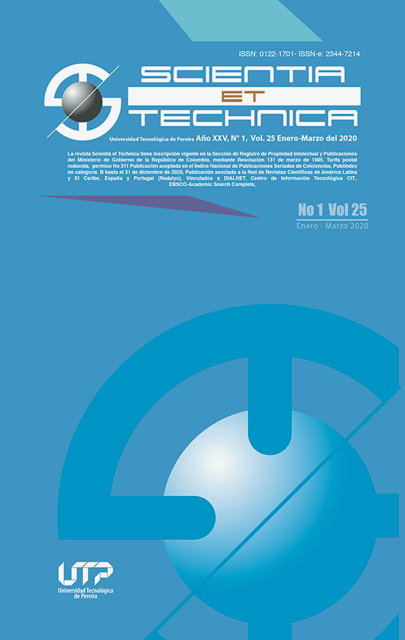Control automático de oxígeno disuelto en un cultivo de tilapia en tanque de geomembrana
DOI:
https://doi.org/10.22517/23447214.23651Palabras clave:
Automatización, Control, Oxígeno Disuelto, Pez OreochromisResumen
Huila es catalogado como uno de los departamentos con mayor producción de tilapia en Colombia, aporta el 53% de la producción total del país con 338 hectáreas de estanques en tierra y jaulas flotantes. Las características ambientales y climatológicas de la región permiten alcanzar una producción de oxígeno que oscila entre 4ppm y 12ppm durante el día, sin embargo, en las noches la situación no es tan favorable, pues la cantidad de oxígeno disuelto puede disminuir hasta 1ppm mientras la de dióxido de carbono aumenta. Por tanto, se requieren equipos y sistemas de oxigenación para evitar retrasos en el crecimiento de los peces y disminuir las tasas de mortalidad. En este artículo se presenta un sistema automático que controla la concentración de oxígeno disuelto manipulando un caudal de recirculación de agua que opera en paralelo con un generador de oxígeno industrial. El sistema monitorea y registra las variables de temperatura y oxígeno presentes en una geomenbrana para generar históricos que permitan evaluar el proceso. La adquisición de los datos se realizó por medio de un sensor de oxígeno de la empresa Atlas Scientific y una sonda de temperatura DS18B20, los cuales envían los datos directamente a una Raspberry Pi que transmite de forma inalámbrica la información recolectada del proceso a un servidor web SISCEFA y a una aplicación móvil a través de las cuales los usuarios pueden observar la trazabilidad de los datos. El sistema mantuvo el oxígeno disuelto dentro de los límites establecidos y la mortalidad de peces disminuyó.
Descargas
Descargas
-
Vistas(Views): 1040
- PDF (English) Descargas(Downloads): 466
Publicado
Cómo citar
Número
Sección
Licencia
Derechos de autor y licencias
La revista es de acceso abierto gratuito y sus artículos se publican bajo la licencia Creative Commons Atribución/Reconocimiento-No Comercial-Compartir bajo los mismos términos 4.0 Internacional — CC BY-NC-SA 4.0.
Los autores de un artículo aceptado para publicación cederán la totalidad de los derechos patrimoniales a la Universidad Tecnológica de Pereira de manera gratuita, teniendo en cuenta lo siguiente: En caso de que el trabajo presentado sea aprobado para su publicación, los autores deben autorizar de manera ilimitada en el tiempo, a la revista para que pueda reproducirlo, editarlo, distribuirlo, exhibirlo y comunicarlo en cualquier lugar, ya sea por medios impresos, electrónicos, bases de datos, repositorios, discos ópticos, Internet o cualquier otro medio requerido.
Los cedentes mediante contrato CESIÓN DE DERECHOS PATRIMONIALES declaran que todo el material que forma parte del artículo está totalmente libre de derechos de autor de terceros y, por lo tanto, se hacen responsables de cualquier litigio o reclamación relacionada o reclamación relacionada con derechos de propiedad intelectual, exonerando de toda responsabilidad a la Universidad Tecnológica de Pereira (entidad editora) y a su revista Scientia et Technica. De igual forma, los autores aceptan que el trabajo que se presenta sea distribuido en acceso abierto gratuito, resguardando los derechos de autor bajo la licencia Creative Commons Atribución/Reconocimiento-No Comercial- Compartir bajo los mismos términos 4.0 Internacional — CC BY-NC-SA 4.0.
https://creativecommons.org/licenses/by-nc-sa/4.0/
A los autores, la revista Scientia et Technica tiene la obligación de respetarle los derechos morales (artículo 30 de la Ley 23 de 1982 del Gobierno Colombiano) que se les debe reconocen a estos la paternidad de la obra, el derecho a la integridad y el derecho de divulgación. Estos no se pueden ceder ni renunciar.



